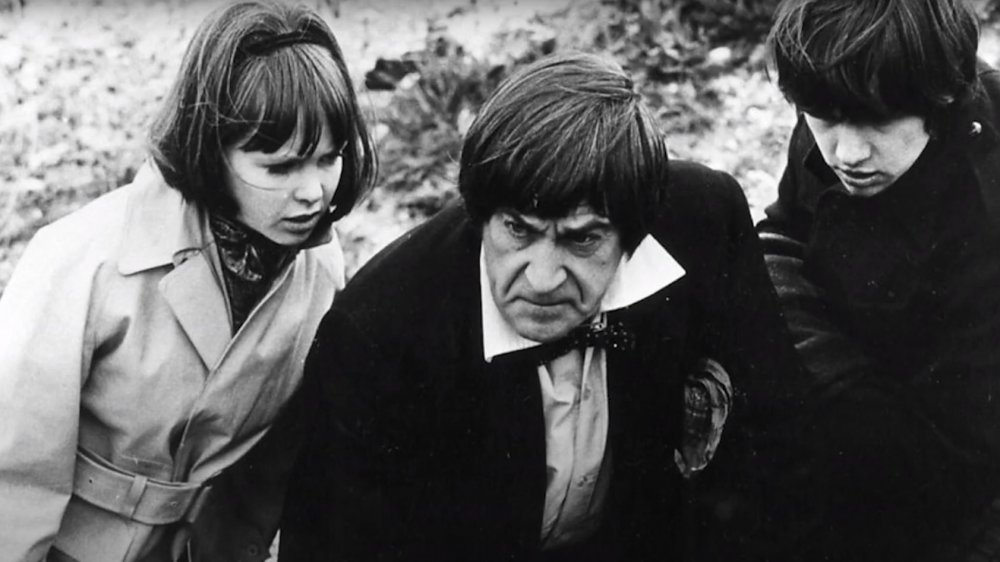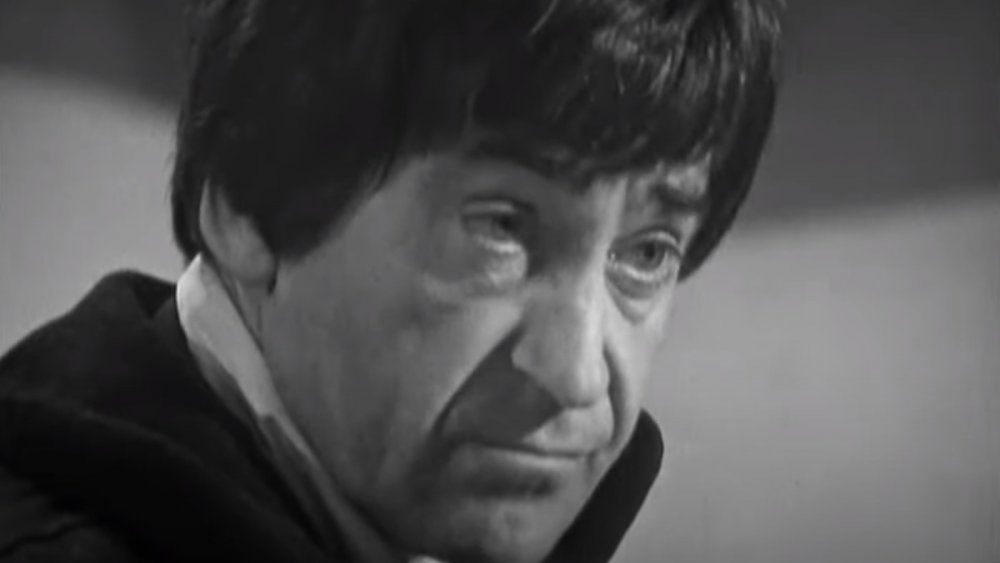The Upsetting Doctor Who Portrayal That Could Have Tanked The Series
For nigh-on six full decades, the Doctor has kept audiences on their toes, with each new incarnation of the character adding more ingredients to the storytelling pot. In 2014, coming off seven seasons of dashing younger actors, Peter Capaldi was introduced, presenting a version of the Doctor who skewed less "youthful British dreamboat" and more "crabby older uncle." In 2017, the part went to Jodie Whitaker, opening new avenues of narrative funk with the series' first ever female Doctor. And for a brief moment in the 1960s, the show very nearly made a move that was every bit as bold and headline grabbing, albeit for basically all the wrong reasons.
It was 1966, and Doctor Who's original Doctor was feeling spread thin. Undiagnosed health problems and a difficult relationship with the show's production team had led to the departure of the show's star, William Hartnell, and the hunt was on for a new protagonist. Hartnell reportedly stated that the only man for the job was character actor Patrick Troughton, and the studio seemed to agree. Troughton was hired on as the second Doctor, but felt trepidation at taking the part, not wanting to be forever typecast or associated with playing a time-traveling weirdo on a children's show. He also stated that he wanted to make it clear upfront that his version of the Doctor was different from Hartnell's.
With all of that in mind, Troughton came up with an idea outlined by him in a 1973 interview: To really make his Doctor something new and exciting, while at the same time affording him the opportunity to divorce himself physically from the part, he wanted to play the Doctor in blackface.
Doctor Hooooo boy...
Troughton's explanation for what would have been an enormously controversial Doctor Who chapter was as follows: When asked about the comedic element that he introduced to the character, he stated, "Well, I thought we had to do something a bit different. My original idea was to black up and wear a big turban and brass earrings and a big grey beard and do it like the Arabian Knights. I thought that would be a wonderful idea, but when I'd finished, I could shave off, take the black off, take the turban off and nobody would know who I was and I wouldn't be typecast."
Troughton hastened to point out that the idea was shut down by the studio, a point he mentioned again in a 1985 interview: "They stamped on that, the powers that be, they thought it was a very bad idea." They, it turns out, were right. It's difficult to imagine that Doctor Who could have maintained its place as a staple of British popular culture following three years of a lead character in blackface. Worse, it might have opened the door to additional interpretations of the Doctor utilizing other ill-conceived methods of costuming. Part of Doctor Who's charm has always been how well the show has aged. If Troughton had gotten his way, that legacy might have been entirely overwritten.
Luckily, Troughton was convinced to play the Doctor as more of a "Chaplineqsue" character, and his turn as the character is now remembered somewhat less problematically as "the Cosmic Hobo." While fan reaction to the second Doctor was mixed, his legacy lives on, and his years as the character are now remembered simply as the episodes you choose to skip, rather than the ones you have to skip. It's the little things you have to be grateful for.

